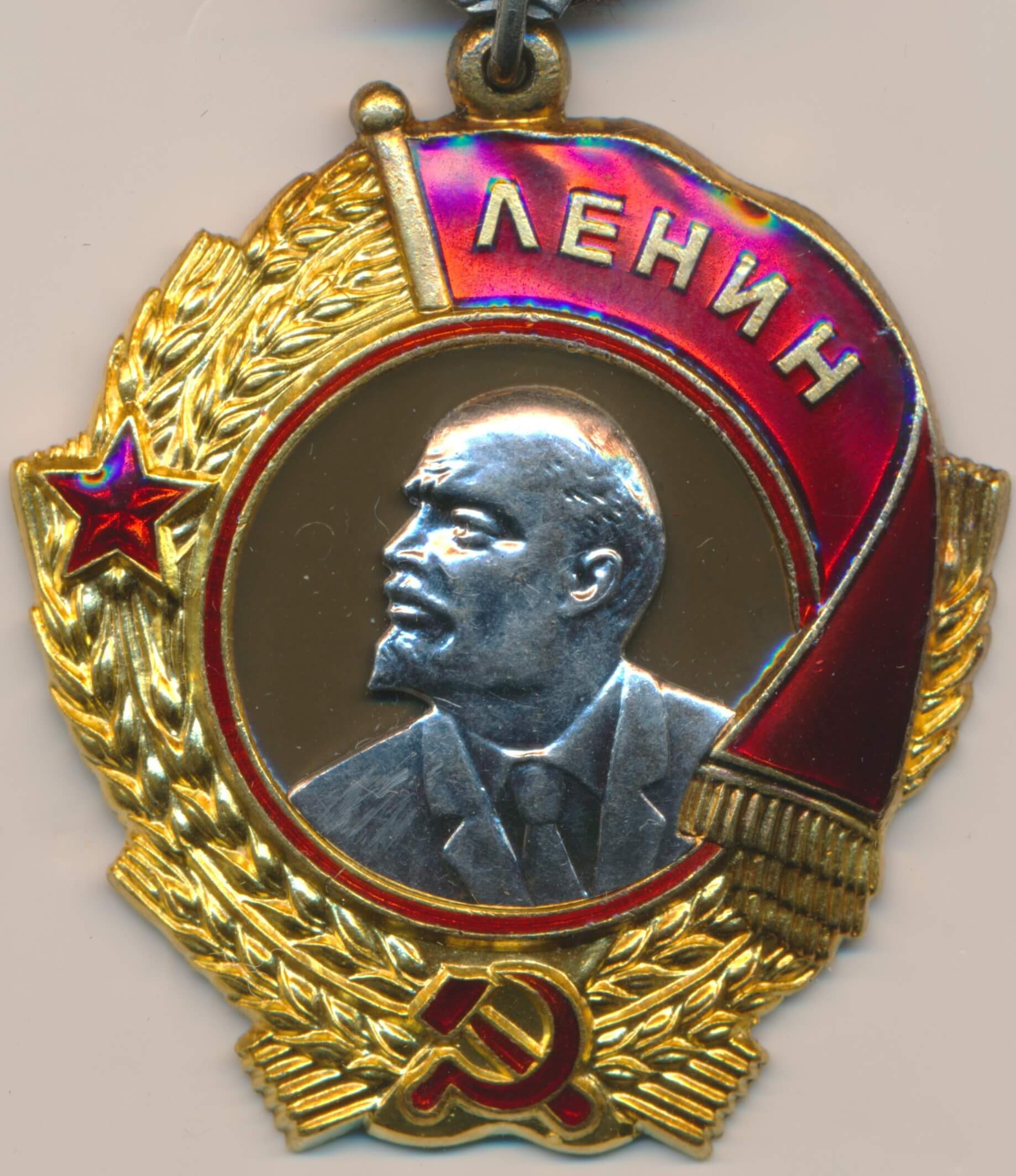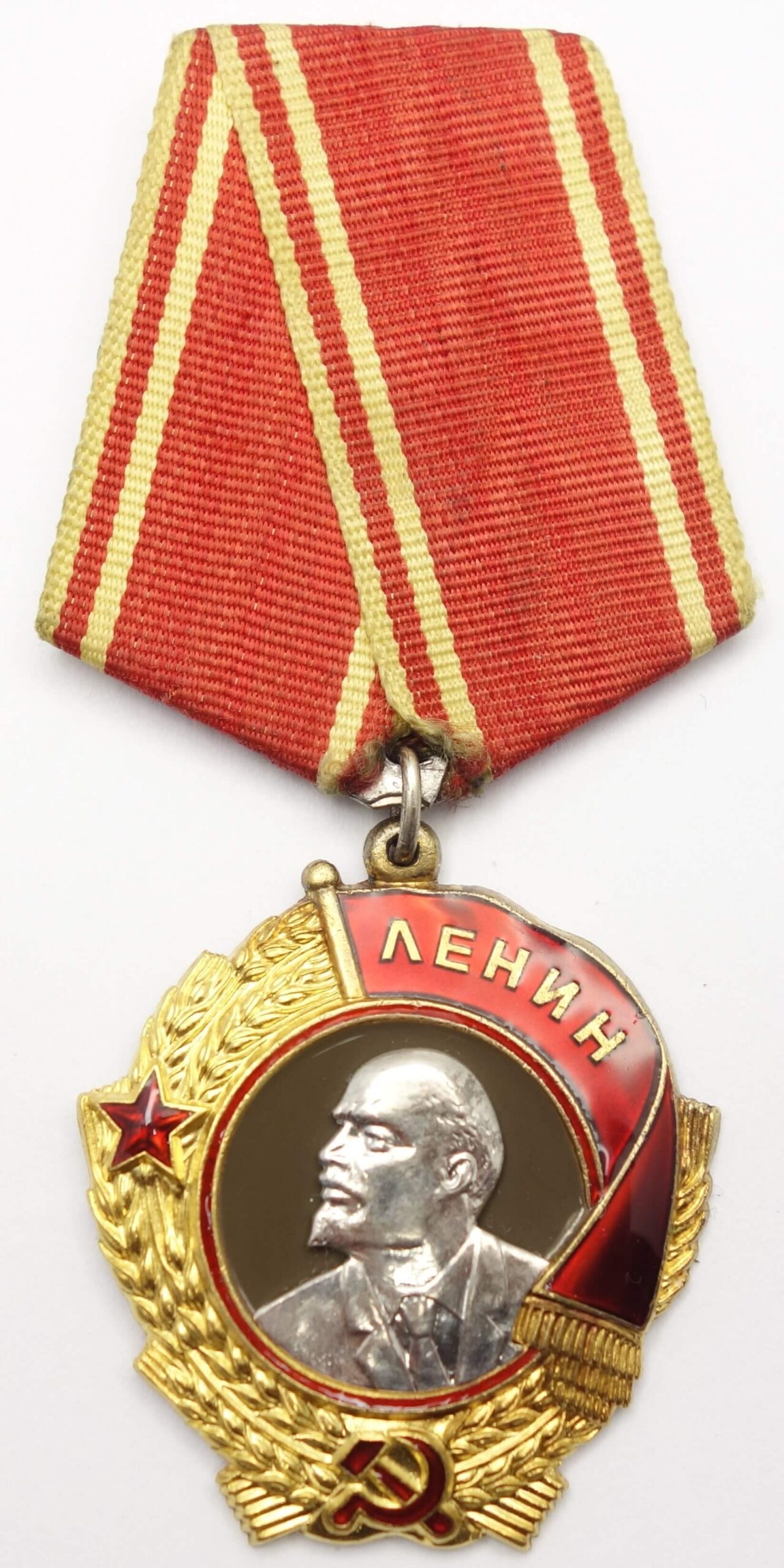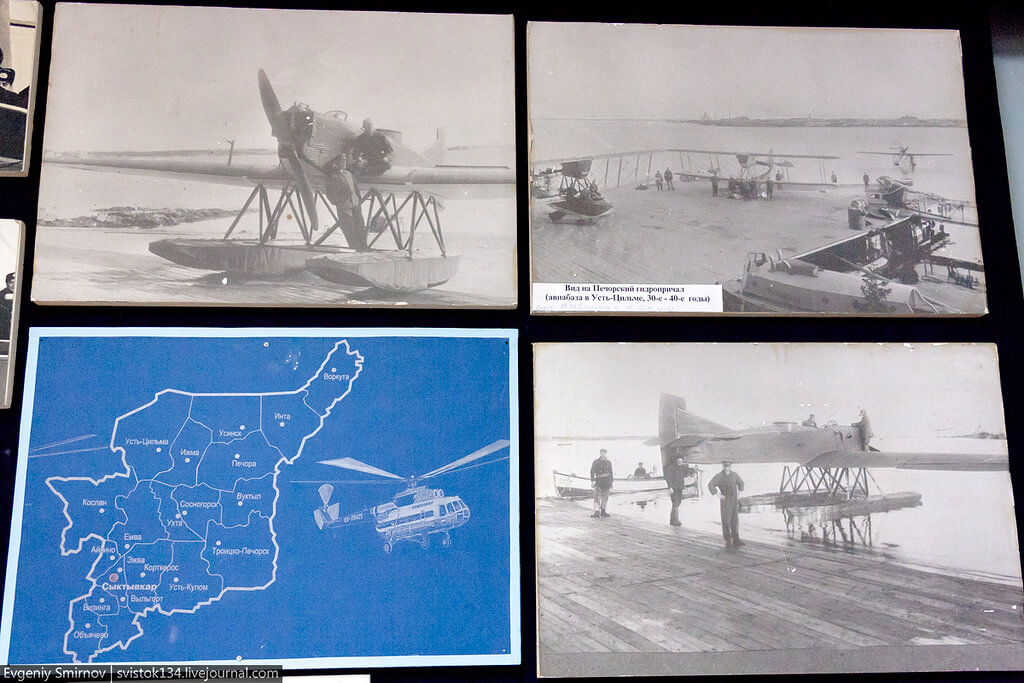Description
Documented Group of Soviet Awards
To NKVD pilot and Senior Lt. Konstantin Lukich Kaidan (Константин Лукич Кайдан)
Kaidan served in the aviation unit assigned to the Ukhtpechlag, which was the a part of the NKVD GULAG system
The group consists of the following items:
Order of Lenin #196948
Made of solid gold, platinum and enamels. Measures 44.05 mm in height, 39.33 mm in width and weighs 32.9 gram without its suspension. The Leningrad mint mark Monetni Dvor and the serial number are located at its reverse.
This original order is in pristine condition with perfect enamels and crisp details. Even the higher laying parts of Lenin’s face show almost no wear. There have been no repairs and the double layer suspension is time period to the order. Its connection ring has not been cut.
Order of the Red Banner #354036
Made of silver and enamels. Measures 45.15 mm in height, 37.41 mm in width and weighs 24.6 gram. The mint mark Monetni Dvor and the serial number are located at the 6 o’clock position of its reverse.
This Order of the Red Banner is also in pristine condition with perfect enamels. The higher laying parts such as the center wreath and the torch have crisp details. There have been no repairs and the double layer suspension is time period to the order. Its connection ring has not been cut.
Order booklet with an image of Kaidan
The order booklet mentions both awards but also two false entries for awards that appeared not to have been awarded to Kaidan. We therefore removed those entries.
Even with the edited award booklet this is an amazing NKVD group with stunning items which is hard to upgrade!
Background information on Kaidan:
Born 26.12.1909 in Odessa city.
In service 15.12.1929 – 31.07.1954
Main service at: Ukhtpechlag NKVD (Ukhta-Pechora Labour Camp)
As pilot, Sr. Lt. KAIDAN served in the aviation unit assigned to the Ukhtpechlag, which was the a part of the NKVD GULAG system.
Ukhtpechlag was tasked in developing the Vorkuta Arctic region and its coal deposits. The Ukhtpechlag air line was organised in 1931. It was not tasked with cargo transportation, but rather with communication between camp divisions, aerial reconnaissance, mail and passenger transportation.
The first aircraft of the air line were the Ju-2 seaplanes decommissioned from the Air Force (naval reconnaissance aircraft, “Junkers”). In spring, summer and autumn, they could touch down on floats on the surface of rivers and lakes, and in winter they replaced the floats with skis. By the end of 1931, there were 4 Ju-20 aircrafts in Ukhtpechlag, which were based in the village of Karpushovka (Ust-Tsilma district). Later, the air line was replenished with aircraft of other brands: Yu-21, Yu-13, K-5, U-2, Sh-2, P-12.
The first pilot of the air line was a GULAG inmate V.A.GINTSE. The infrastructure was gradually build by the GULAG prisoners. The air line did not have meteorological services, and airfields. Lacking navigation instruments, the pilots were orientating in the air by the visual features on the ground: along the rivers Pechora, Usa, Izhma, Vym, Vorkuta, Vychegda, Northern Dvina and along the road line Ust-Vym – Chibyu.
In 1936, the staff of the air line consisted of 7 civilian employees, 7 colonists and 10 GULAG inmates.
A civilian employee was a free man, who was was freely employed by a GULAG camp.
A colonist was a men convicted and sentenced to live in a specific location (normally remote), but his family could relocate and join him.
These men were: the head and the chief engineer of the Air Line P.V. MARKUS (employee), radio operator OPOSHNYANSKY (colonist), pilots: V.A. GINTSE and K.L. KAIDAN (employee); senior technician I.V.BAISHEV (employee); aircraft technicians KARYSHEV (employee) and SANTIROVSKY, motorboat mechanics ANDREEV and GRINEVICH (colonist); and others.
From 1932 to 1936 the airbase was led by the legendary pilot KOVALEVSKY Lev Vladislavovich (born 1895), a hero of the Civil War. After KOVALEVSKY death (16.04.1934), a new director was appointed – MARKUS Pavel Vasilyevich (born 1897), who was killed in a plane crash on 04.10.1936. KAIDAN Konstantin Lukich became the new air line director. KAIDAN remain on this position until 30.07.1937, when the new chief took over.
The intensity of the air traffic can be illustrated by these facts: At the central airbase of the air line: 114 landings and 114 take off per day. At the Ukhta airbase: 75 landings and 75 take off per day. At the Ust-Usa airbase: 72 landings and 72 take off per day.
The archives contain many documents about the participation of pilots from the NKVD squadrons in extreme events. Aviation personnel participated in the suppression of the Ust-Usin riot/uprising of prisoners in 1942: for transporting the officers, monitor the movements of prisoner groups, transfer weapons and ammunition, all available aviation of the republic was mobilized – 6 NKVD aircraft and 4 aircrafts of the Syktyvkar civil aviation group.
When the prisoners seized the regional center of Ust-Usa, organized resitance was delivered by the airfield personnel. The uprising leader sent 6 prisoners on a cart to capture the airfield, which at that time had two planes stationed. But the operation was unsuccessful, since the single airport guard and the pilot of Vorkutlag KAIDAN, who was at that time there, were warned about the impending raid by a Chinese prisoner cook. A group of insurgents on their way to the airfield was met with organized fire and retreated.
The pilots also took part in the operation to eliminate the German special task-force parachuted near town Pechora in 1943. On the night of June 6, 1943, two German four-engined Condor FW200C bombers took off from the Norwegian airfield Narvik. On board was a sabotage group of Abwehr (12 people, mostly Red Army prisoners of war), which was dropped along with weapons and cargo. The goal was the demolition of the railway bridge across the Pechora river. The German mission failed, because one of the team member pursued the others to defect back to USSR. After the landing, they killed the group leader and send a messenger to the nearest NKVD post. But until all this was known, all the area troops were mobilised for interception of the German parachutists. The air units played the crucial role being able to move and transport across large distances and provide air reconnaissance.
In the picture gallery scans and images can be found of pages from a book about the Ukhta Airline, a map of the main aviation links, the Ukhtpechlag plane and Kaidan himself
Please contact us with questions























